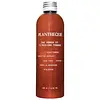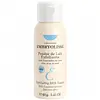What's inside
What's inside
 Key Ingredients
Key Ingredients

 Benefits
Benefits

 Concerns
Concerns

 Ingredients Side-by-side
Ingredients Side-by-side

Glucose
HumectantOryza Sativa Powder
Sodium Lauroyl Glutamate
Oryza Sativa Starch
AbsorbentCitric Acid
BufferingWater
Skin ConditioningCamellia Sinensis Leaf Extract
AntimicrobialRosmarinus Officinalis Leaf Oil
MaskingTremella Fuciformis Polysaccharide
Emulsion StabilisingMaltodextrin
AbsorbentAloe Barbadensis Leaf Juice Powder
Skin ConditioningPapain
Skin ConditioningGlycolipids
Skin ConditioningGlycosphingolipids
EmollientSodium Benzoate
MaskingPotassium Sorbate
PreservativeGlucose, Oryza Sativa Powder, Sodium Lauroyl Glutamate, Oryza Sativa Starch, Citric Acid, Water, Camellia Sinensis Leaf Extract, Rosmarinus Officinalis Leaf Oil, Tremella Fuciformis Polysaccharide, Maltodextrin, Aloe Barbadensis Leaf Juice Powder, Papain, Glycolipids, Glycosphingolipids, Sodium Benzoate, Potassium Sorbate
Ingredients Explained
These ingredients are found in both products.
Ingredients higher up in an ingredient list are typically present in a larger amount.
Citric Acid is an alpha hydroxy acid (AHA) naturally found in citrus fruits like oranges, lemons, and limes.
Like other AHAs, citric acid can exfoliate skin by breaking down the bonds that hold dead skin cells together. This helps reveal smoother and brighter skin underneath.
However, this exfoliating effect only happens at high concentrations (20%) which can be hard to find in cosmetic products.
Due to this, citric acid is usually included in small amounts as a pH adjuster. This helps keep products slightly more acidic and compatible with skin's natural pH.
In skincare formulas, citric acid can:
While it can provide some skin benefits, research shows lactic acid and glycolic acid are generally more effective and less irritating exfoliants.
Most citric acid used in skincare today is made by fermenting sugars (usually from molasses). This synthetic version is identical to the natural citrus form but easier to stabilize and use in formulations.
Read more about some other popular AHA's here:
Learn more about Citric AcidMaltodextrin is a polysaccharide. It is derived from starch such as rice, corn, wheat, or potato starch.
In food, Maltodextrin is used to improve the texture and thicken a product. Due to its structure, it can help create a gel texture. As an emulsion stabilizer, it helps keep the ingredients in a product together.
As a polysaccharide, Maltodextrin has moisturizing properties. Polysaccharides are a type of carbohydrate. The top layer of skin uses polysaccharides to retain water, keeping the skin hydrated.
Maltodextrin is water soluble and has a sweet taste.
Learn more about MaltodextrinOryza Sativa Starch is an absorbent and used to mattify the skin. It is a natural carbohydrate and the main component of rice. A more common name for this ingredient is 'rice starch'.
Rice starch is created by steeping broken grains in a caustic soda.
Rice extract has many skin benefits. Read more about rice extract here.
Learn more about Oryza Sativa StarchSodium Lauroyl Glutamate is the sodium salt from the lauric acid of glutamic acid.
It is a surfactant and helps cleanse the skin. Surfactants gather oil, dirt, and other pollutants from your skin so they may be washed away easily.